
Zika is a mosquito-transmitted virus that has recently spread to the Americas. Zika virus (ZIKV) was discovered in 1946 in Africa where it was isolated from a Rhesus monkey in the Zika forest of Uganda. In 2007, a disease outbreak occurred on the Yap islands in Micronesia, and in 2013, an outbreak occurred in French Polynesia. In 2015, a large outbreak occurred in Brazil, and ZIKV has since spread through the Americas. As of April 18, 2016, 15 counties in the state of Florida had reported travel-associated Zika cases. This seven-page fact sheet provides an overview of ZIKV, including its incidence and distribution, transmission and symptoms, and the connection between zika virus and infant microcephaly. This article also explains the biology and identification of the mosquito that vectors the virus with a focus on how to manage the vector using inspection, larviciding, adulticiding, monitoring, and personal protective equipment. Written by Casey Parker, Roxanne Connelly, Dale Dubberly, Roberto Pereira, and Philip Koehler and published by the Entomology and Nematology Department.
http://edis.ifas.ufl.edu/in1131
Category: Pesticide Information
Metsulfuron-Methyl-Containing Herbicides Potentially Damaging Ornamentals when Applied to Turfgrass
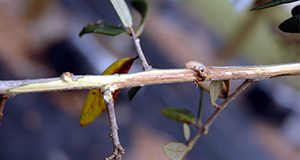
Metsulfuron-methyl, also known as MSM, is an herbicide that is used to control broadleaf weeds and certain grass weeds. It provides effective control of some of the most problematic turfgrass weeds, such as wild garlic, Florida betony, dollar weed, and small Virginia buttonweed. Metsulfuron-methyl is absorbed by plant foliage, so if landscape plants come into contact with the spray or drift they can be injured. This four-page fact sheet describes the potential problems with metsulfuron herbicides, the areas most subsceptible to damage, how to diagnose injury, and how to reduce damage. Written by Chris Marble, Jason Smith, Timothy K. Broschat, Adam Black, Ed Gilman, and Celeste White and published by the School of Forest Resources and Conservation Department.
http://edis.ifas.ufl.edu/fr400
Pest Strips: You Have to Read the Fine Print
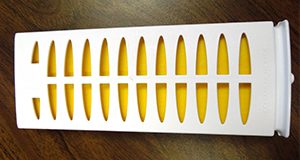
Pest strips are commonly sold at many retail outlets and are available to anyone for purchase. They are constructed of resin plastic with an insecticide that is gradually control-released over time as a vapor. This two-page fact sheets gives important tips on how to use pest strips correctly without creating a hazard.Written by Fred Fishel and published by the Agronomy Department.
http://edis.ifas.ufl.edu/pi262
Choosing a Licensed Wood-Destroying Organism (WDO) Inspector
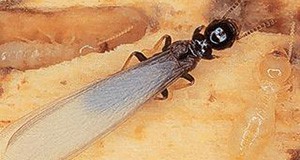
A wood-destroying organism inspection is a visual inspection performed by a licensed pest control inspector trained to identify evidence of termites, powderpost beetles, and other organisms that chew on wood and cause damage to property. Home buyers and sellers, real estate professionals, and lending institutions order these inspections before real estate transactions. This 4-page fact sheet written by Faith M. Oi, Paul Mitola, Kathleen Ruppert, Michael Page, and Mark Ruff and published by the Entomology and Nematology Department explains how to select an inspector who is licensed and certified so that you can be confident in the inspection.
edis.ifas.ufl.edu/IN629
Pesticide Emergencies: Fires and Spills

Although accidents and emergencies involving pesticides are rare, unfortunately they do occur. Pesticide fires or spills can result in water, soil, and air contamination; damage to plants; injury to livestock, wildlife, or pets; and can endanger the health of the applicator and other people. Those using pesticides mus be prepared to respond to fires and spills as emergencies and act promptly and correctly. This six-page fact sheet explains how to reduce fire and spill hazards and what to do if a fire or spill should occur. Written by Frederick M. Fishel, and published by the Agronomy Department.
http://edis.ifas.ufl.edu/pi258
Pesticides: Routes of Exposure
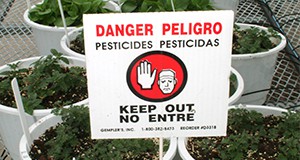
Pesticides can cause both short-term and long-term effects in humans. Human exposure to pesticides can happen through four major routes: through the mouth and digestive system, through the eyes, through the skin, or through the nose and respiratory system. This two-page fact sheet explains each route of pesticide exposure, providing information on how to reduce the risk of pesticide exposure and hazard. Written by Frederick M. Fishel, and published by the Agronomy Department.
http://edis.ifas.ufl.edu/pi260
Pesticide Labeling: Precautionary Statements

Precautionary statements found on pesticide labeling tell the user information about the toxicity, irritation, and sensitization hazards associated with the use of the pesticide. These labels also provide treatment instructions and information to reduce exposure potential. This five-page fact sheet describes the different types of statements found on pesticide labels, as well as the instructions for personal protective equipment, and first-aid treatments. This publication also contains several reference tables for pesticide labels and their meanings. Written by Frederick M. Fishel, and published by the Agronomy Department.
http://edis.ifas.ufl.edu/pi259
Pesticide Emergencies: Contingency Planning

In the event of a pesticide emergency, having a an emergency response plan can help protect the health and welfare of employees and the community, minimize environmental damage, and potentially reduce liability. The goal of contingency planning is to prevent emergencies; but if an emergency does occur, the contingency plan allows business owners and managers to react appropriately in order to minimize detrimental effects.This eleven-page fact sheet provides insight on how to develop a contingency plan for addressing emergencies where pesticides are involved. Written by Frederick M. Fishel, and published by the Agronomy Department.
http://edis.ifas.ufl.edu/pi257
A Summary of Revisions to the Worker Protection Standard: 2015

In 1992, the US Environmental Protection Agency (EPA) issued a comprehensive regulation called the Worker Protection Standard for Agricultural Pesticides (WPS). The WPS covers pesticides used in the outdoor and enclosed space production of plants on farms, forests, and nurseries, as well as greenhouses. The EPA has made several changes to the WPS since it was fully implemented in 1995. On November 2, 2015, the EPA revised the WPS, making significant changes to the rule’s requirements. This five-page fact sheet explains those changes. Written by Frederick M. Fishel, and published by the Agronomy Department.
http://edis.ifas.ufl.edu/pi261
First Aid for Pesticide Exposure

Pesticide poisoning is a commonly under-diagnosed illness. This five-page fact sheet describes how to recognize the early symptoms of pesticide exposure and provide basic first aid for the treatment of victims. This fact sheet explains how to provide initial treatment in the case of pesticide exposure on the skin, in the eye, through inhalation, and in the mouth or swallowed. Written by Frederick M. Fishel, and published by the Agronomy Department.
http://edis.ifas.ufl.edu/pi256
Guidelines for Purchasing and Using Commercial Natural Enemies and Biopesticides in North America
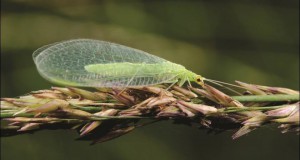
This guide provides assistance in selecting, purchasing, and using commercially available natural enemies and biopesticides for managing pest problems. The guide assists in the identification of pests by habitat and lists types of natural enemies (parasitic nematodes, predatory mites, predatory insects, and parasitic wasps) and biopesticides available to manage these pests. Scientific and product names are provided both for insect and mite natural enemies and for some of the most common microbial insecticides, nematicides, and fungicides that can be used to manage pests. Biological control companies are listed along with their websites, and the guide provides additional sources of information on obtaining and using commercial natural enemies. Written by Lynn M. LeBeck and Norman C. Leppla, and published by the UF Department of Entomology and Nematology, October 2015.
http://edis.ifas.ufl.edu/in849
Pesticide Storage: Keep It in the Container
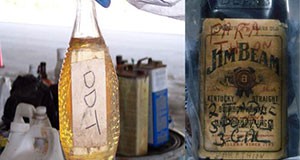 Accidents happen quickly, and so do accidents with pesticides. Anyone storing pesticides, especially in the presence of children, needs to take precautions by keeping them in their proper, original containers. Several people have died when they unknowingly drank pesticides from containers that originally held soda, other beverages, or foodstuffs. In particular, the herbicide paraquat is highly toxic to humans; one small accidental sip can be fatal, and there is no antidote. This 3-page fact sheet was written by Fred Fishel, and published by the UF Department of Agronomy, May 2015. (Photo: Fred Fishel)
Accidents happen quickly, and so do accidents with pesticides. Anyone storing pesticides, especially in the presence of children, needs to take precautions by keeping them in their proper, original containers. Several people have died when they unknowingly drank pesticides from containers that originally held soda, other beverages, or foodstuffs. In particular, the herbicide paraquat is highly toxic to humans; one small accidental sip can be fatal, and there is no antidote. This 3-page fact sheet was written by Fred Fishel, and published by the UF Department of Agronomy, May 2015. (Photo: Fred Fishel)
http://edis.ifas.ufl.edu/pi255
Urban Pests and Pest Management
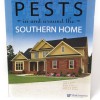 The warm southern states provide an ideal environment for a wide variety of pests — and because almost everyone has problems with pests, most urban areas are sprayed with pesticides. 30 to 40 percent of pesticide use is in urban areas, but most pesticide applications are unnecessary and can result in environmental contamination and human exposure to pesticides. This 5-page fact sheet from Pests in and around the Southern Home introduces integrated pest management practices that can help reduce pesticide use in the home. Written by P.G. Koehler, and published by the UF Department of Entomology and Nematology, October 2013.
The warm southern states provide an ideal environment for a wide variety of pests — and because almost everyone has problems with pests, most urban areas are sprayed with pesticides. 30 to 40 percent of pesticide use is in urban areas, but most pesticide applications are unnecessary and can result in environmental contamination and human exposure to pesticides. This 5-page fact sheet from Pests in and around the Southern Home introduces integrated pest management practices that can help reduce pesticide use in the home. Written by P.G. Koehler, and published by the UF Department of Entomology and Nematology, October 2013.
http://edis.ifas.ufl.edu/in1073
The Facts about Mothballs
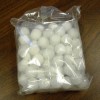 Mothballs, moth flakes, crystals, and bars are insecticides that are formulated as solids. Naphthalene and paradichlorobenzene, the active ingredients in mothballs, are registered as pesticides. As such, their label directions carry the force of the law, including use intent and the sites where they may legally be used. They can harm people, pets, or wildlife that may touch or eat the mothballs or that may breathe the vapors. This 3-page fact sheet was written by Fred Fishel, and published by the UF Department of Agronomy, December 2014.
Mothballs, moth flakes, crystals, and bars are insecticides that are formulated as solids. Naphthalene and paradichlorobenzene, the active ingredients in mothballs, are registered as pesticides. As such, their label directions carry the force of the law, including use intent and the sites where they may legally be used. They can harm people, pets, or wildlife that may touch or eat the mothballs or that may breathe the vapors. This 3-page fact sheet was written by Fred Fishel, and published by the UF Department of Agronomy, December 2014.
http://edis.ifas.ufl.edu/pi254
Pool Chemicals and Personal Safety
 Pool chemicals are among the most common household substances and are used to protect health in recreational waters. Pool chemicals containing chlorine safeguard against recreational-water illnesses caused by disease-causing pathogens, such as the diarrhea-causing Cryptosporidium. They also enhance disinfection by regulating water pH. But even though these materials are regularly handled by homeowners, most don’t ever realize that they are handling pesticides. This 3-page fact sheet was written by Fred Fishel, and published by the UF Department of Agronomy, September 2014.
Pool chemicals are among the most common household substances and are used to protect health in recreational waters. Pool chemicals containing chlorine safeguard against recreational-water illnesses caused by disease-causing pathogens, such as the diarrhea-causing Cryptosporidium. They also enhance disinfection by regulating water pH. But even though these materials are regularly handled by homeowners, most don’t ever realize that they are handling pesticides. This 3-page fact sheet was written by Fred Fishel, and published by the UF Department of Agronomy, September 2014.
http://edis.ifas.ufl.edu/pi253
Clasificacion de las licencias para aplicadores dictadas por el Departamento de Agricultura y Servicios al Consumidor del estado de la Florida (FDACS), relacionadas con agricultura y control de plagas
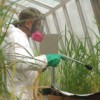 Esta guía ofrece una explicación de las licencias para aplicadores de pesticidas privados, públicos y comerciales emitidos por FDACS en el Capítulo 487 de los Estatutos de la Florida. This 4-page fact sheet is the Spanish language version of Agricultural and Related Pest Control Applicator License Classifications under the Florida Department of Agriculture and Consumer Services (FDACS). Written by Frederick M. Fishel and Tatiana Sanchez, and published by the UF Department of Agronomy, February 2014.
Esta guía ofrece una explicación de las licencias para aplicadores de pesticidas privados, públicos y comerciales emitidos por FDACS en el Capítulo 487 de los Estatutos de la Florida. This 4-page fact sheet is the Spanish language version of Agricultural and Related Pest Control Applicator License Classifications under the Florida Department of Agriculture and Consumer Services (FDACS). Written by Frederick M. Fishel and Tatiana Sanchez, and published by the UF Department of Agronomy, February 2014.
http://edis.ifas.ufl.edu/pi249
Mejorando la efectividad de un programa profesional para el manejo de plagas
 El propósito de esta guía es proporcionar información que permita optimizar el control de plagas en el entorno del hogar cuando se trabaja con un operador profesional para el control de plagas. This 2-page fact sheet is a Spanish language translation of Enhancing the Effectiveness of a Professional Pest Management Program, written by Frederick M. Fishel and Tatiana Sanchez, and published by the UF Department of Agronomy, March 2014.
El propósito de esta guía es proporcionar información que permita optimizar el control de plagas en el entorno del hogar cuando se trabaja con un operador profesional para el control de plagas. This 2-page fact sheet is a Spanish language translation of Enhancing the Effectiveness of a Professional Pest Management Program, written by Frederick M. Fishel and Tatiana Sanchez, and published by the UF Department of Agronomy, March 2014.
http://edis.ifas.ufl.edu/pi252
Los ninos y los pesticidas
 Los niños actúan rápido, pero también lo hacen los venenos, incluidos los pesticidas. Afortunadamente para la mayoría de los padres, sus hijos no son perjudicados cuando los padres tienen un lapso momentáneo y no los supervisan por un corto tiempo. Pero ¿cómo responderían los padres si de repente se dan la vuelta, y su niño está sosteniendo una lata de aerosol con insecticida para el hogar? Esta publicación describe algunos hechos y medidas de precaución con respecto a los niños y los pesticidas en el ambiente del hogar, para que los padres tengan una mejor idea de cómo mantener productos químicos dañinos lejos de sus hijos.
Los niños actúan rápido, pero también lo hacen los venenos, incluidos los pesticidas. Afortunadamente para la mayoría de los padres, sus hijos no son perjudicados cuando los padres tienen un lapso momentáneo y no los supervisan por un corto tiempo. Pero ¿cómo responderían los padres si de repente se dan la vuelta, y su niño está sosteniendo una lata de aerosol con insecticida para el hogar? Esta publicación describe algunos hechos y medidas de precaución con respecto a los niños y los pesticidas en el ambiente del hogar, para que los padres tengan una mejor idea de cómo mantener productos químicos dañinos lejos de sus hijos.
This 3-page fact sheet is a Spanish-language translation of Children and Pesticides, written by Frederick M. Fishel and Tatiana Sánchez, and published by the UF Department of Agronomy, March 2014.
http://edis.ifas.ufl.edu/pi250
Guia de gestion de plagas para citricos en la Florida 2014: Interpretacion de los enunciados de PPE en las etiquetas de pesticidas
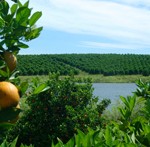 Este documento le ayuda a comprender los enunciados revisados para Equipo de Protección Personal (PPE) que ahora hacen parte de las etiquetas de los productos pesticidas utilizados en las fincas, bosques, viveros e invernaderos. This 3-page fact sheet is a Spanish-language translation of 2014 Florida Citrus Pest Management Guide: Interpreting PPE Statements on Pesticide Labels. Written by O. Norman Nesheim, Frederick M. Fishel, and Tatiana Sanchez, and published by the UF Department of Agronomy, September 2013.
Este documento le ayuda a comprender los enunciados revisados para Equipo de Protección Personal (PPE) que ahora hacen parte de las etiquetas de los productos pesticidas utilizados en las fincas, bosques, viveros e invernaderos. This 3-page fact sheet is a Spanish-language translation of 2014 Florida Citrus Pest Management Guide: Interpreting PPE Statements on Pesticide Labels. Written by O. Norman Nesheim, Frederick M. Fishel, and Tatiana Sanchez, and published by the UF Department of Agronomy, September 2013.
http://edis.ifas.ufl.edu/cg089
Exposicion de familias agricultoras al glifosato
 Esta publicación describe un estudio sobre la Exposición de Familias Agricultoras, realizado en 2000 para determinar la exposición de familias de agricultores al herbicida comúnmente aplicado, el glifosato. Los propósitos del estudio fueron: cuantificar la exposición a pesticidas en el mundo real inmediatamente antes, durante, y después de una aplicación de pesticidas, además de identificar los factores importantes que influyen en la exposición.
Esta publicación describe un estudio sobre la Exposición de Familias Agricultoras, realizado en 2000 para determinar la exposición de familias de agricultores al herbicida comúnmente aplicado, el glifosato. Los propósitos del estudio fueron: cuantificar la exposición a pesticidas en el mundo real inmediatamente antes, durante, y después de una aplicación de pesticidas, además de identificar los factores importantes que influyen en la exposición.
The English version of this document is Farm Family Exposure to Glyphosate (PI-214).This 8-page fact sheet was written by Frederick M. Fishel y Tatiana Sánchez, and published by the UF Department of Agronomy, July 2014.
http://edis.ifas.ufl.edu/pi251